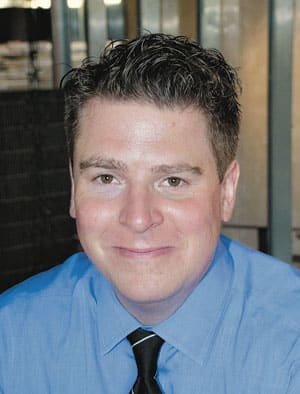GUEST OPINION: How to conquer the say-do ratio

.floatimg-left-hort { float:left; } .floatimg-left-caption-hort { float:left; margin-bottom:10px; width:300px; margin-right:10px; clear:left;} .floatimg-left-vert { float:left; margin-top:10px; margin-right:15px; width:200px;} .floatimg-left-caption-vert { float:left; margin-right:10px; margin-bottom:10px; font-size: 12px; width:200px;} .floatimg-right-hort { float:right; margin-top:10px; margin-left:10px; margin-bottom:10px; width: 300px;} .floatimg-right-caption-hort { float:left; margin-right:10px; margin-bottom:10px; width: 300px; font-size: 12px; } .floatimg-right-vert { float:right; margin-top:10px; margin-left:10px; margin-bottom:10px; width: 200px;} .floatimg-right-caption-vert { float:left; margin-right:10px; margin-bottom:10px; width: 200px; font-size: 12px; } .floatimgright-sidebar { float:right; margin-top:10px; margin-left:10px; margin-bottom:10px; width: 200px; border-top-style: double; border-top-color: black; border-bottom-style: double; border-bottom-color: black;} .floatimgright-sidebar p { line-height: 115%; text-indent: 10px; } .floatimgright-sidebar h4 { font-variant:small-caps; } .pullquote { float:right; margin-top:10px; margin-left:10px; margin-bottom:10px; width: 150px; background: url(http://www.dmbusinessdaily.com/DAILY/editorial/extras/closequote.gif) no-repeat bottom right !important ; line-height: 150%; font-size: 125%; border-top: 1px solid; border-bottom: 1px solid;} .floatvidleft { float:left; margin-bottom:10px; width:325px; margin-right:10px; clear:left;} .floatvidright { float:right; margin-bottom:10px; width:325px; margin-right:10px; clear:left;}
I’ve been involved in many different types of organizations. Something I’ve always struggled with is how to balance what I agree to do and what it is possible for me to do. I’m always eager to help and always feel that I can, but sometimes it’s easy to lose sight of how much I agree to do and balance that against my available “bandwidth.”
That was less of a factor until recently, when my 10-year-old daughter moved in with me. As a single dad, the shift in my priorities was immediate, but my aspiration to contribute as much as possible was unchanged. It got me thinking about my own personal say-do ratio and something I read about a long time ago: Abraham Maslow’s hierarchy of needs.
Maslow’s hierarchy of needs is a five-level diagram that outlines how individuals’ needs are categorized, in ascending order. It starts with the basics – physiology, food, shelter. Then it moves up to the need for security. Then come social needs, then self-esteem … and at the very top, self-actualization, which is achieved only if the other needs in the pyramid have been satisfied.
So, how do I scale my own personal pyramid? How do I balance my need to contribute with my need to provide the best possible environment for my daughter? If I say I will do something, I need to do it. It’s important not only for my personal identity, credibility and brand, but it’s also important that my daughter believes in me and knows that she can depend on me.
So, what do I do? It was difficult at first. I’ll be honest: I felt overcommitted. But then I remembered something my very first project manager said to me about a building I was designing. I felt overwhelmed at the scale of it at first, but then he said to me: “Everything is like a garage. It has a foundation. It has walls. It has a roof. Don’t try to do it all at once. Break it into parts and keep the scale of what you’re doing in mind. Small or large, every building has the same steps to the solution.”
Realizing that, I started building interdependencies between my professional Madlow’s pyramid and my daughter’s personal one. For each step up in my professional development, such as a move into feeling secure with what I’m doing at work (Level 2), I make sure that my daughter has the security of knowing that I’m home with her in the evenings. For belonging and social needs (Level 3), I make sure that my professional relationships are nurtured, but balanced against my social interaction with her and making sure she is making lasting relationships within her social groups. The same with my feelings of professional self-esteem (Level 4) and her personal self-esteem.
At the top of the pyramid is the need for self-actualization. This desire to feel like you are consistently reaching your full potential as a person (for me as a father) and a professional is the ultimate goal. I think the epiphany for me came when I realized that I need to make choices that allow me to make the best contributions, not necessarily the most contributions.
For my daughter and for me, finding a balance allows me the peace of mind to say “no” or direct resources or members of my personal network to help solve the issue in the best possible way.
As you think about how to climb up the pyramid, you may find that balance is the ladder you build to scale it to the very top.
Joseph R. Benesh is the K-12 Focus Market Leader and project manager at RDG Planning + Design. He can be reached at joe@joebenesh.com.







